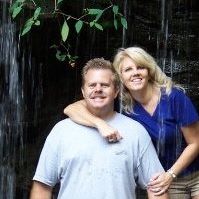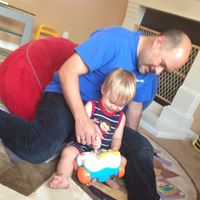Robert B Truitt
age ~84
from West Lafayette, IN
- Also known as:
-
- Robert P Truitt
- Robert S Truitt
- Rob P Truitt
- Bob P Truitt
Robert Truitt Phones & Addresses
- West Lafayette, IN
- Sun City Center, FL
- W Lafayette, IN
- Potomac, MD
Work
-
Company:Robert D. Truitt
-
Address:
Specialities
Civil Litigation • Insurance Defense • Personal Injury Law • Criminal Defense
Name / Title
Company / Classification
Phones & Addresses
President
Hemocleanse Inc
Mfg Surgical/Medical Instruments
Mfg Surgical/Medical Instruments
3601 Sagamore Pkwy N, Lafayette, IN 47904
7657429392, 7657424813
7657429392, 7657424813
Director
Kirby Risk Corporation
Whol Electrical Equip Armature Rewinding Mfg Industrial Machinery Mfg Elec Components Mfg Elec Indstl Equip · Whol Electrical Equip Mfg Elec Measuring Instr Mfg Motor Vehicle Parts Mfg Engine Elec Equip Mfg Elec Connectors
Whol Electrical Equip Armature Rewinding Mfg Industrial Machinery Mfg Elec Components Mfg Elec Indstl Equip · Whol Electrical Equip Mfg Elec Measuring Instr Mfg Motor Vehicle Parts Mfg Engine Elec Equip Mfg Elec Connectors
1815 Sagamore Pkwy N, Lafayette, IN 47904
PO Box 5089, Lafayette, IN 47903
7654484567, 7654484748
PO Box 5089, Lafayette, IN 47903
7654484567, 7654484748
Chief Executive Officer, President
Ash Access Technology, Inc
Noncommercial Research Organization Mfg Surgical/Medical Instruments
Noncommercial Research Organization Mfg Surgical/Medical Instruments
3601 Sagamore Pkwy N, Lafayette, IN 47904
7657424813
7657424813
Director , Secretary
El Paso Scottish Rite Historical Library and Museum Foundation
Chairman
ZS Pharma, Inc.
Biotechnology · Developing Drug Transfer Agent
Biotechnology · Developing Drug Transfer Agent
508 Wrangler Dr SUITE 100, Coppell, TX 75019
508 Wrangler Drivesutie 100, Coppell, TX 75019
3601 Sagamore Pkwy N, Lafayette, IN 47904
7657424813, 9723931586
508 Wrangler Drivesutie 100, Coppell, TX 75019
3601 Sagamore Pkwy N, Lafayette, IN 47904
7657424813, 9723931586
Secretary
Midland Masonic Historical Museum and Library Foundation
Principal
Boilemakers for Christ Inc
Religious Organization
Religious Organization
415 Teal Rd, Lafayette, IN 47905
Principal
Vascular Technologies, Inc
Business Services
Business Services
3601 Sagamore Pkwy N, Lafayette, IN 47904
Medicine Doctors

Robert Allan Truitt
view sourceSpecialties:
Internal Medicine
General Practice
General Practice
Education:
University of Louisville(1984)
License Records
Robert N Truitt
License #:
1028 - Expired
Issued Date:
Sep 16, 1960
Renew Date:
Jun 1, 2004
Expiration Date:
Jul 1, 2004
Type:
Certified Public Accountant
Lawyers & Attorneys

Robert Truitt - Lawyer
view sourceOffice:
Robert D. Truitt
Specialties:
Civil Litigation
Insurance Defense
Personal Injury Law
Criminal Defense
Insurance Defense
Personal Injury Law
Criminal Defense
ISLN:
903063096
Admitted:
1973
University:
Loyola University, B.S., 1967
Law School:
Valparaiso University, J.D., 1973
Us Patents
-
Specialized Perfusion Protocol For Whole-Body Hyperthermia
view source -
US Patent:54764440, Dec 19, 1995
-
Filed:Oct 4, 1994
-
Appl. No.:8/318132
-
Inventors:Norman G. Keeling - McMurray PA
Stephen R. Ash - Lafayette IN
Robert B. Truitt - Lafayette IN
Joseph A. Guzman - Atlanta GA -
Assignee:IDT, Inc. - Pittsburgh PA
-
International Classification:A61M 103
-
US Classification:604 4
-
Abstract:A method for extracorporeal blood heating to effect whole body hyperthermia, which utilizes a hemodialyzer with a sorbent suspension in the dialysate, a blood pump and a heat exchanger--in addition to various probes and catheters and heated anterior and posterior blankets for the patient--to effect extracorporeal treatment without adverse effect on blood physiology and without the need for general anesthesia. Blood returning to the body is heated to at least about 46. degree. C. Incorporation of hemodialysis into the blood heating treatment solves at once several problems which plagued prior art hyperthermia techniques: it rectifies any imbalances of sodium, potassium, magnesium, bicarbonate or phosphate, and may remove toxins incident to necrosis of tumors and virally infected cells. Hyperthermia protocols with sorbent--based dialysis of blood thus avoid the various serious side effects which complicated--even to the point of death--the hyperthermia treatments known from the past.
-
Compact And Cleanable Apparatus For Preventing Scale Formation In Liquid Systems
view source -
US Patent:47131594, Dec 15, 1987
-
Filed:May 7, 1986
-
Appl. No.:6/860746
-
Inventors:Robert B. Truitt - West Lafayette IN
V. Bruce Junius - Lafayette IN -
Assignee:Fluid Mechanics - Lafayette IN
-
International Classification:C23F 1300
-
US Classification:204197
-
Abstract:A device for eliminating mineral precipitation within a liquid system. A container having inlet and outlet pipes is connectable to external plumbing to receive and pass through the container untreated water or liquid. The inlet pipe is connected within the container to a fitting having a treatment pipe extending therebeneath to the bottom of the container. A metal treatment bar is suspendedly positioned within the treatment pipe, but is spaced internally therefrom to allow the untreated water to contact and pass over the treatment bar eventually emptying into the container. The water exiting the treatment pipe eventually exits the container through the outlet pipe. The treatment bar is fixedly and suspendedly mounted by a rod extending out of the container and secured to a plug sealingly, but removably mounted to the container top wall. The plug is removable along with rod and treatment bar to facilitate cleaning of the bar. A pressure relief valve is mounted to the container top wall to allow for manual release of pressure.
Flickr
Plaxo

Robert Truitt
view sourceShaklee

Robert Truitt
view source
Robert Truitt
view source
Robert Truitt
view source
Robert Truitt
view source
Robert Joseph Truitt
view source
Robert Truitt
view source
Robert J Truitt
view source
Robert Truitt
view sourceMyspace
Classmates

Robert Stoltz (Truitt)
view sourceSchools:
Westmer High School Joy IL 1961-1965
Community:
Becky Fox, Michelle Lilly

Robert Truitt
view sourceSchools:
Miller Grove Middle School Decatur GA 2001-2005

Robert Truitt
view sourceSchools:
Homer L. Ferguson High School Newport News VA 1987-1991
Community:
Kevin Ledbetter, Ronald Fox

Robert Truitt
view sourceSchools:
Lewiston Junior High School Lewiston ME 1980-1984
Community:
Eric Whitten, Angela Verrill, Jim Grimmel, Diane Tierney

Robert Truitt
view sourceSchools:
Ach Junior High School Cincinnati OH 1955-1959
Community:
Mckinley Hudson, Tonya Moore, Michael Davis, Jan Smith

Robert Truitt
view sourceSchools:
Alva T. Stanforth Junior High School Elmont NY 1972-1973
Community:
Dorothy Scerri, Ronald Pierse
Googleplus

Robert Truitt

Robert Truitt

Robert Truitt
Youtube
Get Report for Robert B Truitt from West Lafayette, IN, age ~84













